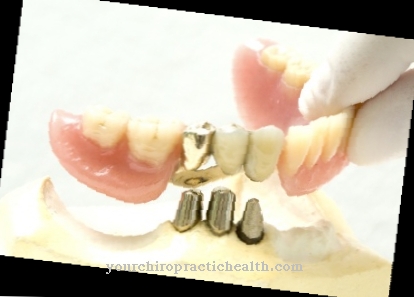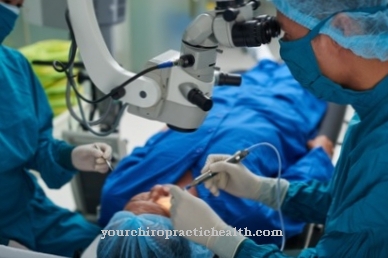People who live in the western industrialized nations usually consume around 50% carbohydrates per day with their food. low carb consists of consuming fewer carbohydrates every day and goes back to the Englishman William Bantin (19th century), who practiced this form of nutrition on the advice of his doctor and described it in a book. He himself had lost 23 kilograms of body weight within a year on the meat-rich diet.
What is low carb?

Many different nutritional approaches with a reduced carbohydrate content are summarized under the term low carb. Low carb is practiced by people who want to lose weight, patients with certain illnesses and committed low carb supporters who want to prevent health problems with this diet.
The carbohydrates normally part of the daily diet are replaced by proteins and fats. The building blocks of low carb are: Meat, fish, vegetables (little), dairy products (little, as they contain lactose, which is a carbohydrate). Proponents of this diet are of the opinion that the normally high carbohydrate content in food is harmful to health and promotes the occurrence of the so-called diseases of civilization. The body can only process short-chain carbohydrates such as cereal products to a limited extent.
The carbohydrate supply from outside is also not necessary, since the body can produce the carbohydrates by using energy from glycerine and amino acids. In addition, the insulin ensures that the body creates fat pads. Low carb is easier to implement in daily practice than other forms of nutrition such as whole foods or raw food diets, since most people already consume a lot of meat, cheese, fish and fat.
Function, effect & goals
The aim of low carb is to achieve weight loss with as few carbohydrates as possible. Due to the reduced amount of carbohydrates, the body is forced to get the energy it needs from its own fat stores (ketosis).
The high protein content of the low-carb diet causes a stronger and longer-lasting feeling of satiety, as the peptide tyrosyl-tyrosine (PYY) is increasingly released after consuming protein-rich foods. The pancreas is not forced to release large amounts of insulin after a meal and is therefore spared. Low carb includes various, often very different, dietary styles. In addition to low carb forms with a reduction in daily carbohydrate intake such as the Lutz diet, there are low carb diets that take into account the glycemic index (GI) or the glycemic load and low carb high fat (LCHF) approaches.
The Lutz diet limits the daily carbohydrate intake to a maximum of 6 bread units (BU). The low carbler has to do without starch and sugar as far as possible and consume mainly animal products. In addition to reducing the daily amount of carbohydrates, other low-carb forms also restrict the diet to carbohydrates that have a low glycemic load. With LCHF diets, the weight loss person may only consume a maximum of 50 grams of carbohydrates and consumes a lot of animal fat and protein. The most prominent representative of LCHF is probably the Atkins method.
The ketogenic diet with less than 50 grams of carbohydrates per day is mainly for medical reasons (patients with GLUT1 deficit syndrome, cancer, etc.).
The South Beach Diet relies on fat and low-carbohydrate foods with a low GI. One protein-containing food (egg, soy product, etc.) may be consumed with each of the three meals. Ice cream, which is only allowed in small quantities, and good differences. Comparative meta-studies have shown that low-carb diets appear to be more beneficial than low-fat diets for patients with type 2 diabetes and those with insulin resistance.
Long-term studies with children and adolescents who were fed the ketogenic low-carb diet came to the conclusion that the very low carbohydrate content is harmless to the health of the test subjects. In comparative clinical studies on the effectiveness of low carb and low fat, the subjects with a low-carbohydrate diet achieved greater weight loss than the comparison group. After a year of dieting, the results evened out.
Risks, side effects & dangers
The increased protein content of the low carb diet can negatively affect an existing gout. The large amount of protein ingested can also exacerbate existing liver and kidney diseases. If the risk of arteriosclerosis is genetically determined, the low-carb diet leads to increased cholesterol deposits on the blood vessel walls and thus to an increased risk of stroke and heart attack (which has been shown in animal experiments).
A similar effect can be assumed in humans. In addition, many people who practice low carb for long periods of time experience symptoms such as constipation, bad breath, muscle cramps, headaches and nausea. Children of mothers who ate a low-carb diet during their pregnancy are at increased risk of developing high blood pressure or overproduction of cortisol later. It can cause type 2 diabetes, mental disorders, muscle weakness, and bone loss.
The high protein content of low carb increases the risk of developing cancer in later years of life (Campbell studies). There is also the risk that some of the amino acids will be converted into glucose (sugar), i.e. carbohydrates, through the formation of new glucose. Many nutritionists assume that the high fat content of low-carb foods increases the risk of arteriosclerosis, especially in patients with cardiovascular diseases, the elderly and pregnant women.
People who are prone to stress and people who suffer from depression have no way of positively influencing their mood because of the reduction in the carbohydrate content in low carb. After ending the low carb (crash) diet, the body reacts more sensitively to carbohydrates than before.













.jpg)

.jpg)
.jpg)











.jpg)